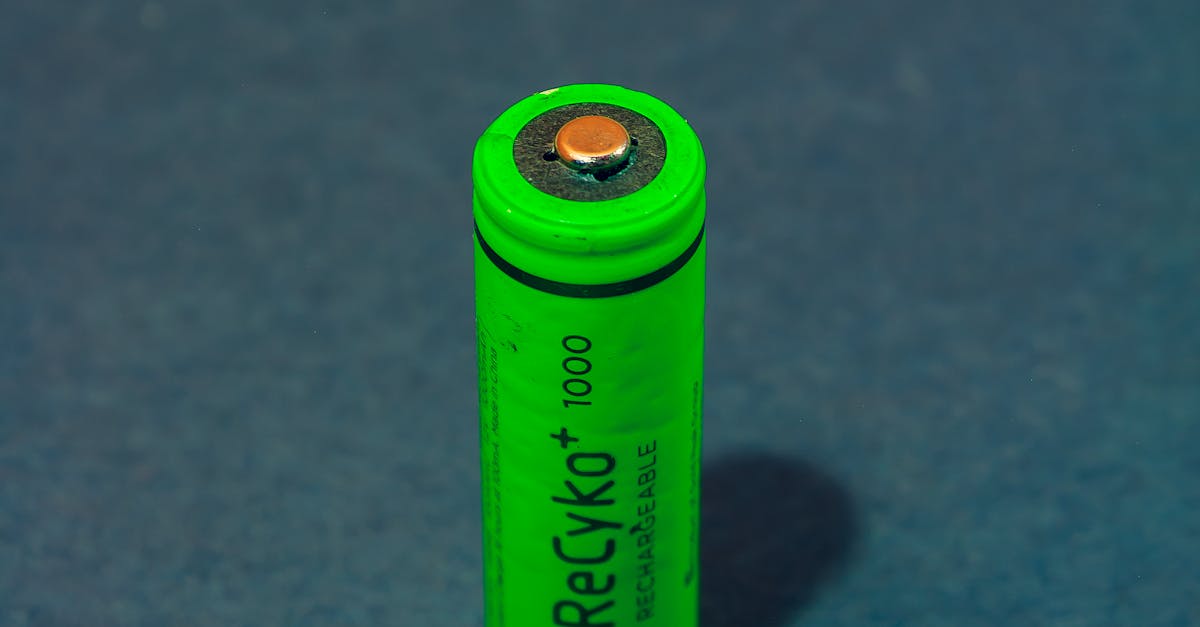
Maintenance of Home Battery Systems
Regular maintenance is essential to ensure the longevity and efficiency of home battery systems. This includes periodic inspections to check for any signs of wear or damage. Keeping the battery terminals clean can prevent corrosion, which may hinder performance. Additionally, monitoring the battery’s charge cycles will help identify any irregularities early, enabling timely intervention.
It is also crucial to follow the manufacturer's guidelines concerning maintenance schedules and operational limits. Making sure the system operates within recommended temperature ranges can prevent overheating and enhance overall reliability. Such preventive measures not only extend the lifespan of the battery but also optimise its performance, ensuring that homeowners can reap the full benefits of their investment.
Best Practices for Longevity
Maintaining optimal conditions for your home battery system is essential to prolong its lifespan. Regularly check the temperature of the environment where the battery is installed. A cooler temperature typically increases efficiency and reduces degradation. Additionally, ensure that the battery is kept clean and free from debris. Dust and dirt accumulation can affect performance and may lead to overheating.
Monitoring the battery’s performance is another important aspect of maintenance. Keeping track of charge cycles helps in identifying any irregularities in usage patterns. It is advisable to use the battery regularly rather than allowing it to sit idle for extended periods. This practice can aid in maintaining its health and effectiveness. Schedule periodic professional inspections to catch potential issues before they escalate, ensuring longevity and reliable performance.
Integrating Battery Storage with Solar Panels
The integration of battery storage systems with solar panels offers a seamless way to enhance energy efficiency in homes. By capturing excess energy generated on sunny days, these batteries store power for use during periods of low sunlight or higher demand. This capability helps homeowners reduce reliance on the grid, ultimately leading to lower electricity bills and a smaller carbon footprint. A well-designed system ensures that solar energy is effectively harnessed, maximising potential savings over time.
Choosing the right battery storage system can significantly impact overall performance. Factors such as battery capacity, discharge rates, and compatibility with existing solar panel setups are crucial considerations. The effectiveness of this integration also depends on the inverter used, which facilitates communication between the solar panels and the battery. By optimising these components, homeowners can achieve greater energy independence and make effective use of the renewable energy generated on their property.
Maximising Solar Energy Usage
Home battery systems function optimally when paired with solar panels, ensuring maximum energy efficiency. Homeowners can significantly reduce their reliance on the grid by storing excess energy produced during sunny days. This approach allows the use of solar energy even when the sun is not shining, such as during the evening or on cloudy days. By carefully timing the use of stored energy, households can further decrease electricity bills and enhance sustainability.
To fully harness solar energy, homeowners should consider their consumption patterns. Installing smart home technology can facilitate this process, enabling users to monitor energy usage in real-time. With data on when energy demand peaks, individuals can adjust their habits to make better use of stored electricity. This thoughtful integration of battery storage and solar panels not only optimises energy efficiency but also contributes to a reduced carbon footprint.
Government Incentives for Battery Storage
Government schemes have increasingly become a vital part of the push towards renewable energy, particularly in the realm of battery storage solutions. Various initiatives exist to support homeowners looking to invest in technology that enhances energy efficiency and independence. These incentives often come in the form of grants, tax breaks, or low-interest loans, significantly reducing the initial investment costs. As these programs evolve, they seek to encourage wider adoption of home battery systems while contributing to national sustainability goals.
In addition to national schemes, many local authorities offer their own incentives tailored to encourage renewable energy projects in their areas. These can include specific rebates for the installation of battery storage alongside solar panels or supplementary funding for energy audits. Homeowners who do their research can often find additional support, making the transition to renewable energy more accessible. Understanding the various options available can lead to considerable savings while facilitating a smoother journey toward energy independence.
Available Grants and Schemes
Various government initiatives aim to encourage homeowners to invest in battery storage solutions. Grants and schemes are available to help offset the upfront costs of purchasing and installing battery systems. These financial incentives can significantly reduce the overall expenditure, making it a more attractive option for households looking to enhance their energy independence.
Local authorities and national programmes often provide specific guidelines on eligibility and application procedures. Homeowners are urged to explore these opportunities, as they may also include additional benefits such as reduced energy bills or increased property value. Staying informed about changes in policy and new schemes can further support sustainable energy investments while contributing to a greener environment.
FAQS
What is home battery storage?
Home battery storage refers to systems that store energy generated from renewable sources, such as solar panels, allowing homeowners to use this energy during times when generation is low or energy prices are high.
How can I maintain my home battery system?
Regular maintenance of home battery systems includes checking battery health, ensuring proper ventilation, and monitoring for any signs of physical damage or leaks. It's also advisable to follow the manufacturer’s guidelines for specific maintenance practices.
Can I integrate a home battery system with my existing solar panels?
Yes, most home battery systems can be integrated with existing solar panels, allowing you to store excess energy generated during the day for use later. Consulting with a professional installer can help ensure compatibility and optimal performance.
What government incentives are available for home battery storage?
Various government incentives, such as grants and tax rebates, may be available to encourage the adoption of home battery storage systems. These incentives often vary by region, so it's best to check with local authorities for specific programmes.
How can I maximise the usage of solar energy with a battery storage system?
To maximise solar energy usage with a battery storage system, you should aim to charge your battery during peak solar generation times and use the stored energy during peak demand times. Additionally, adjusting your energy consumption habits can help optimise usage.




